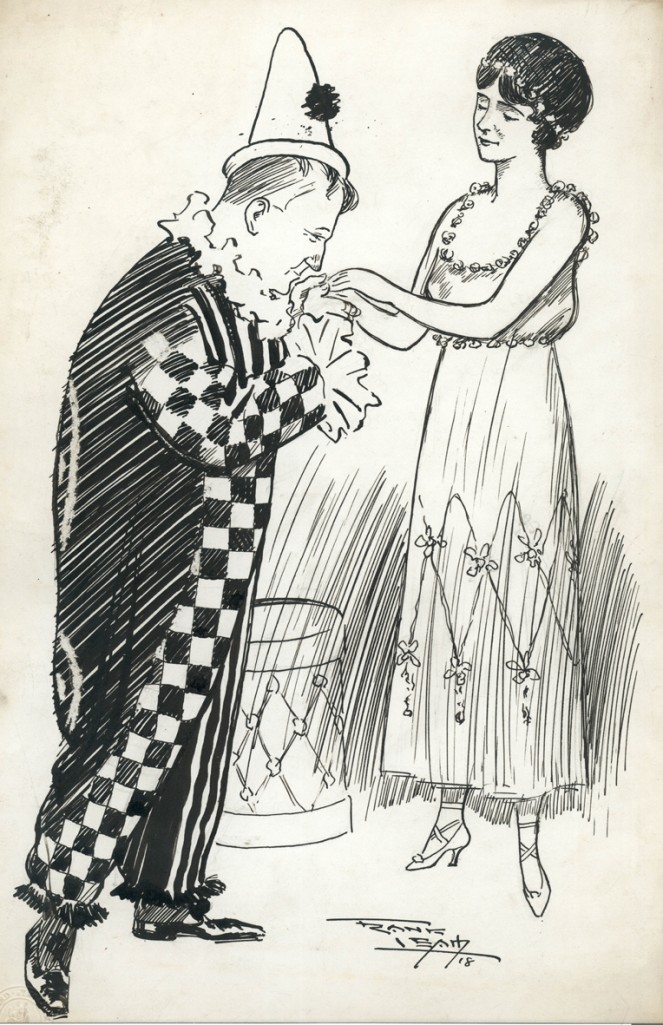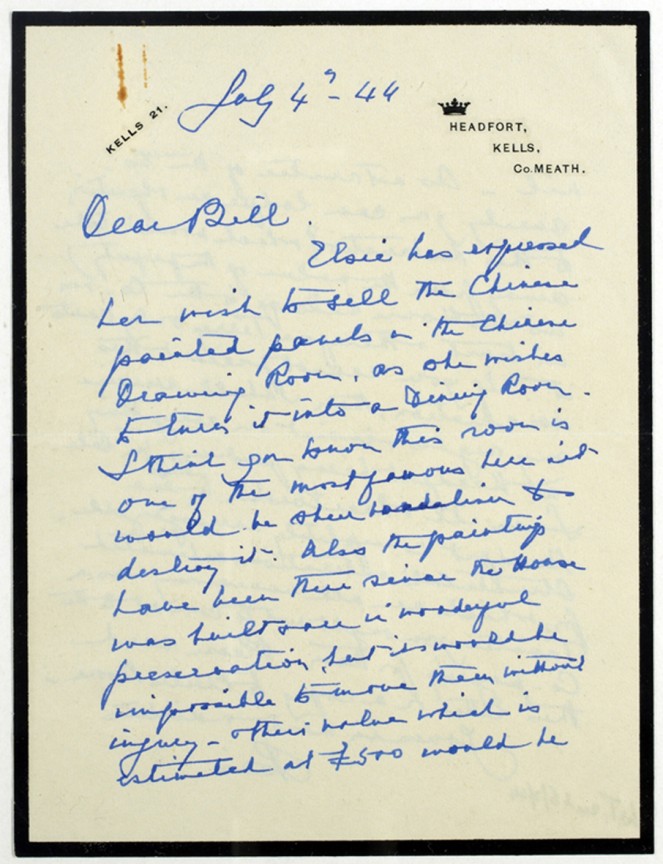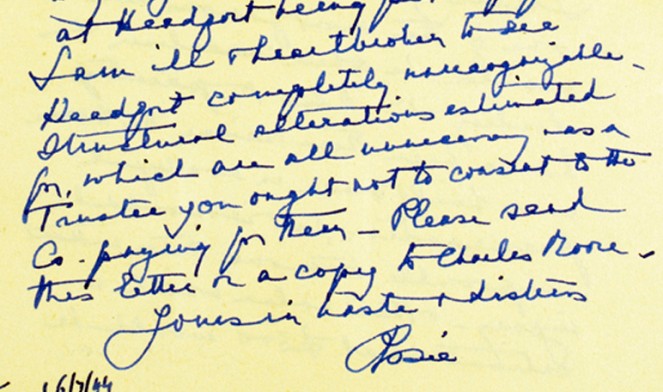by Eimear Walsh, NLI Manuscript Student
Working on the ever-expanding Headfort Estate Collection, I came across the original Will and Kate love affair in Co. Meath of all places: an aristocrat who married a mere commoner!

Frank Leah sketch of Rosie Boote being greeted by Harlequin. NLI call no. PD 2159 TX (20) 52, part of our Joseph Holloway Collection
While today’s public may champion Kate Middleton, it took Edwardian society considerably longer to warm to her predecessor, Rosie Boote. This beautiful and charismatic showgirl from Tipperary, who enamoured the 4th Marquess of Headfort with her performances on the London stage, caused quite a sensation in both Kells and London circles when she married her beau in 1901 and adopted the title Marchioness.
On hearing the intentions of the smitten nobleman, a scandalised high society banded together to prevent the ignominious union. Even King Edward VII got involved! Choosing social and career suicide, the besotted Marquess flouted all conventions and converted to Roman Catholicism to marry his sweetheart. Ostracised for two years, the couple were eventually accepted back into London society when invited by the Duchess of Westminster to the Royal Ball of the season. I found a brilliant article by The New York Times about the highly anticipated event on 2 August, 1903, that reads:
‘The entrance of Lord Headfort and his wife was of course the sensation of the evening, and, in spite of what must have been a most trying ordeal, Lady Headfort bore herself in a manner which every one declared to be perfect. Her gown was one of the most beautiful of all the beautiful costumes seen at the ball; her appearance as striking as it was, and, if anything her manners were better than those of the grandes dames who crowded around her inquisitively.’
Substitute ‘Kate’ for ‘Lady Headfort’ and ‘royal wedding’ for ‘ball’ and voilà: history repeating itself!

Letter from Rosie, Marchioness of Headfort, 4 July 1944 from our Headfort Collection
Regardless of a gruelling introduction to the aristocracy, Rosie proved more than able for her new role and is remembered as one of Headfort’s most gracious and shrewd Marchionesses. Letters in our collection show the influence Rosie carried in both family and business matters. In her later years, as the now widowed Dowager, she became even more forceful in her opinions as her daughter-in-law, the then Lady Headfort, was quick to discover when she attempted to redecorate the beloved Chinese Room in Headfort House – ‘sheer vandalism’ were Rosie’s sentiments on the matter. All in all, it is clear that the spirited Rosie came to epitomise Headfort in its swansong, and her letters show she was truly distraught to see its fragmentation when in the 1940s the family abandoned their ancestral homestead, and Ireland’s only Adam house, to allow it become a preparatory school. Writing in 1944, the usually pragmatic Rosie cannot hide her emotions: ‘I am ill and heartbroken to see Headfort completely unrecognizable.’

"I am ill and heartbroken to see Headfort completely unrecognizable... Yours in haste and distress" Rosie, Marchioness of Headfort

